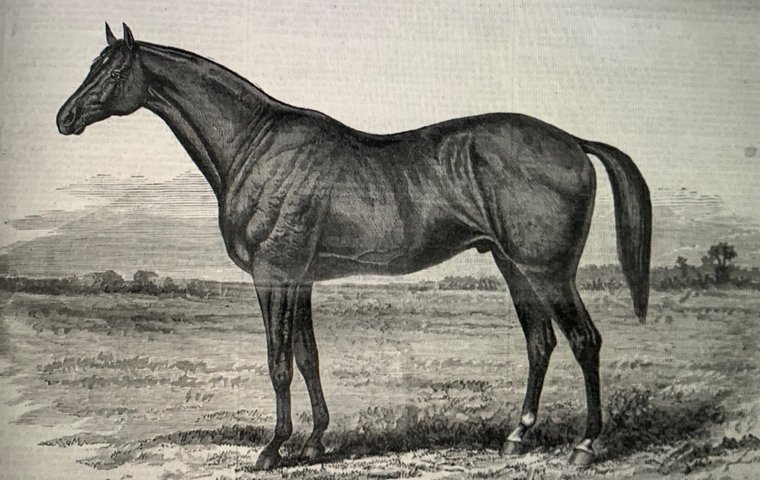
FROM THE ARCHIVE: Ahead of the second leg of the Triple Crown at Pimlico on Saturday, we revisit Patrick Gilligan’s account of how the famous Woodlawn Vase – the Preakness Stakes trophy – came into being
• Originally published May 2021
Woodlawn Racecourse was formed by the Woodlawn Racing Association in Louisville in 1858. It held its first race meet in the fall of the following year, a full 16 years before Churchill Downs would stage its first race. The initial meets proved a success. The racecourse was popularly considered one of the best anywhere, and the great and the good came both to see the sports and to be seen.
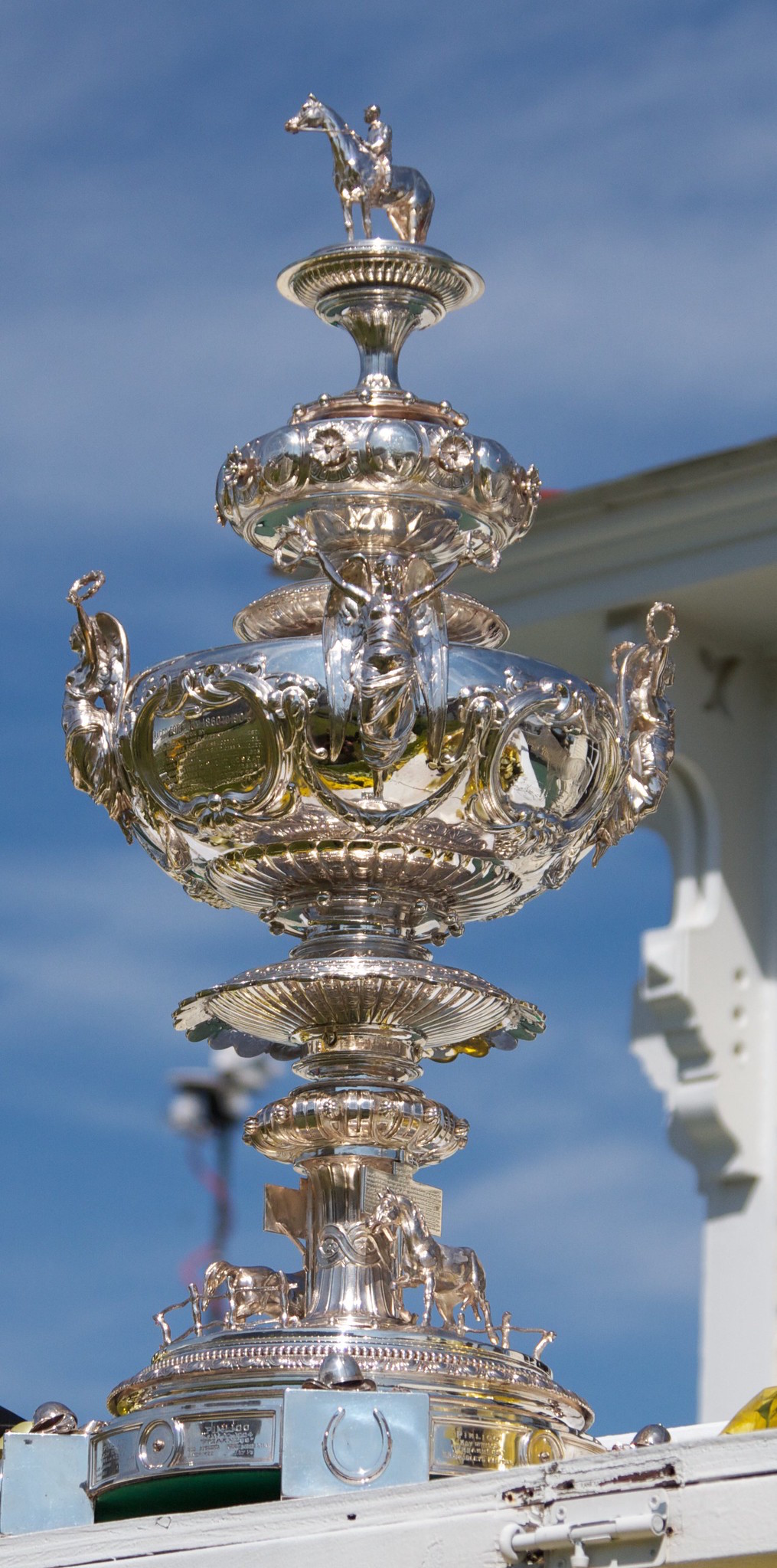 By 1862, however, the Civil War impacted Woodlawn Racecourse to such an extent that one of the officers of the track, Robert Alexander, an eminent Thoroughbred breeder, buried on his horse farm for safekeeping a magnificent sporting challenge trophy he had commissioned just two years earlier. It’s the trophy pictured alongside this article (photo courtesy of Michael Weekes Jr).
By 1862, however, the Civil War impacted Woodlawn Racecourse to such an extent that one of the officers of the track, Robert Alexander, an eminent Thoroughbred breeder, buried on his horse farm for safekeeping a magnificent sporting challenge trophy he had commissioned just two years earlier. It’s the trophy pictured alongside this article (photo courtesy of Michael Weekes Jr).
After the war, Woodlawn never recovered its initial popularity. By 1870, it had staged its last race.
Small replicas
The Woodlawn Vase, as the buried trophy was known, was thereafter posted by different owners for different races at different tracks. By 1878, it had emigrated east to New Jersey, and from there to Jerome Park, and then Morris Park racetrack in New York.
Eventually, in 1917, it arrived at Pimlico Racecourse, where it was put up as the trophy awarded to the winner of the Preakness Stakes.
The trophy was awarded annually to winning connections until 1953. Nowdays, a one-third-size trophy goes to the winning owner, and smaller replicas still go to the winning trainer and jockey. They are still made of sterling silver, though, and the owner gets to keep it. Each replica Woodlawn Vase is valued at $40,000.
That is why the original trophy is no longer awarded as a challenge trophy as it once was, entrusted to each winning owner for 12 months until the following year’s contest.
The actual Woodlawn Vase stands three feet high. It is formed from 30lbs of solid sterling silver. On top of the base stands a stallion and a mare and foal. Above that is inscribed the rules for competing for the Woodlawn Vase. Above that, on the main body of the bowl, are four shields. Two are blank, one has a representation of a racehorse, and the other a representation of Woodlawn Racecourse. Higher up are four figures of victory, a wreath held in their outstretched arms. Above that are portraits of the eight officers of the Woodlawn Racecourse Association.
Finally, the whole piece is topped by a sculpture of a famous racehorse and great sire of the day. More of him later.
The original trophy, when commissioned by Robert Alexander, cost $1,000. Tiffany’s, the world-famous jewelers, were engaged to create it. It was a shrewd commission.
Indeed, the Preakness winner’s check wouldn’t buy the trophy that represents the race. Justify, who in 2018 won all three legs of the Triple Crown, earned just under $3 million for his efforts. Even that wouldn’t be enough to buy the Woodlawn Vase.
It is, in fact, estimated to be the most valuable sporting trophy in North America, and the second-most valuable sporting trophy in the world today. (The FIFA World Cup, made of 18 carat gold, is the only one valued higher). Either way, the Woodlawn Vase is a piece of art that stands alone as a unique piece of American history. It literally could never be replaced.
A horse called Preakness
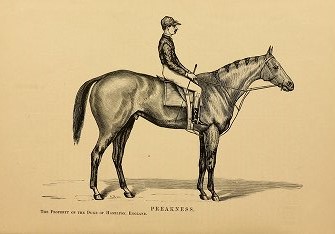 Preakness was foaled in 1867 in Kentucky, and sold there as a yearling for $2,000, the highest price noted for a Thoroughbred yearling at that time. He was purchased by prominent owner M H Sanford and was named after his own Preakness Stud in Preakness, New Jersey.
Preakness was foaled in 1867 in Kentucky, and sold there as a yearling for $2,000, the highest price noted for a Thoroughbred yearling at that time. He was purchased by prominent owner M H Sanford and was named after his own Preakness Stud in Preakness, New Jersey.
He was a great racehorse of his time, winning 18 of his 39 starts. On his first start, he won the inaugural running of the two-mile Dinner Party Stakes, the second-richest stakes ever run in the United States at that time, at the newly formed Pimlico racecourse.
Later he was exported to England to race. He finished second in a handicap at Epsom and was subsequently sold to stand at stud there.
He was shot dead one day in 1881 by his new owner, the Duke of Hamilton. Apparently both horse and owner had temperament issues.
The greatest stallion of his day was Lexington. He stood at Woodburn Farm, perhaps the most important historic horse farm in North American Thoroughbred racing history.
Woodburn Farm was owned by Robert Alexander, the man who commissioned Tiffany’s to create the Woodlawn Vase, which he buried at his farm all those years ago. It was the same farm where Preakness was born.
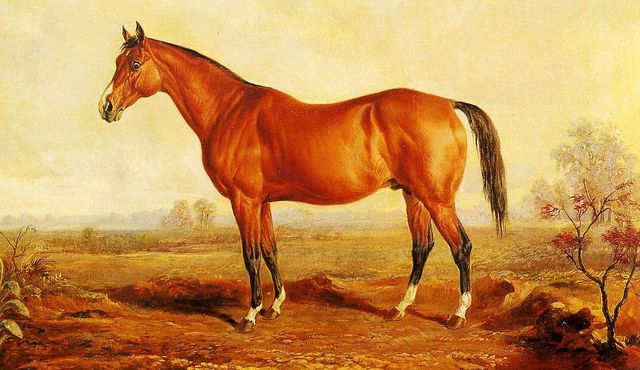 The famous stallion standing atop the trophy is Lexington. He became one of the greatest sires of all time – and he was the father of Preakness.
The famous stallion standing atop the trophy is Lexington. He became one of the greatest sires of all time – and he was the father of Preakness.
Today the vase is on display at the Baltimore Museum of Art. Each year it is brought to Pimlico in May, on Preakness Stakes day, by the Maryland National Guard.
If you get a chance to see it at Pimlico, or at the Baltimore Museum of Art, you should take it. It is a piece of American history, and of American art. And you will get to see what $4 million looks like.
If you ever drive past Airdrie Stud Farm on Frankfort Pike in Lexington, Kentucky, then you are passing Woodburn Farm, where treasure was once buried, and treasure was born.
In 2018, Preakness was inducted into the National Museum of Racing and Hall of Fame.
• Visit the Preakness Stakes website
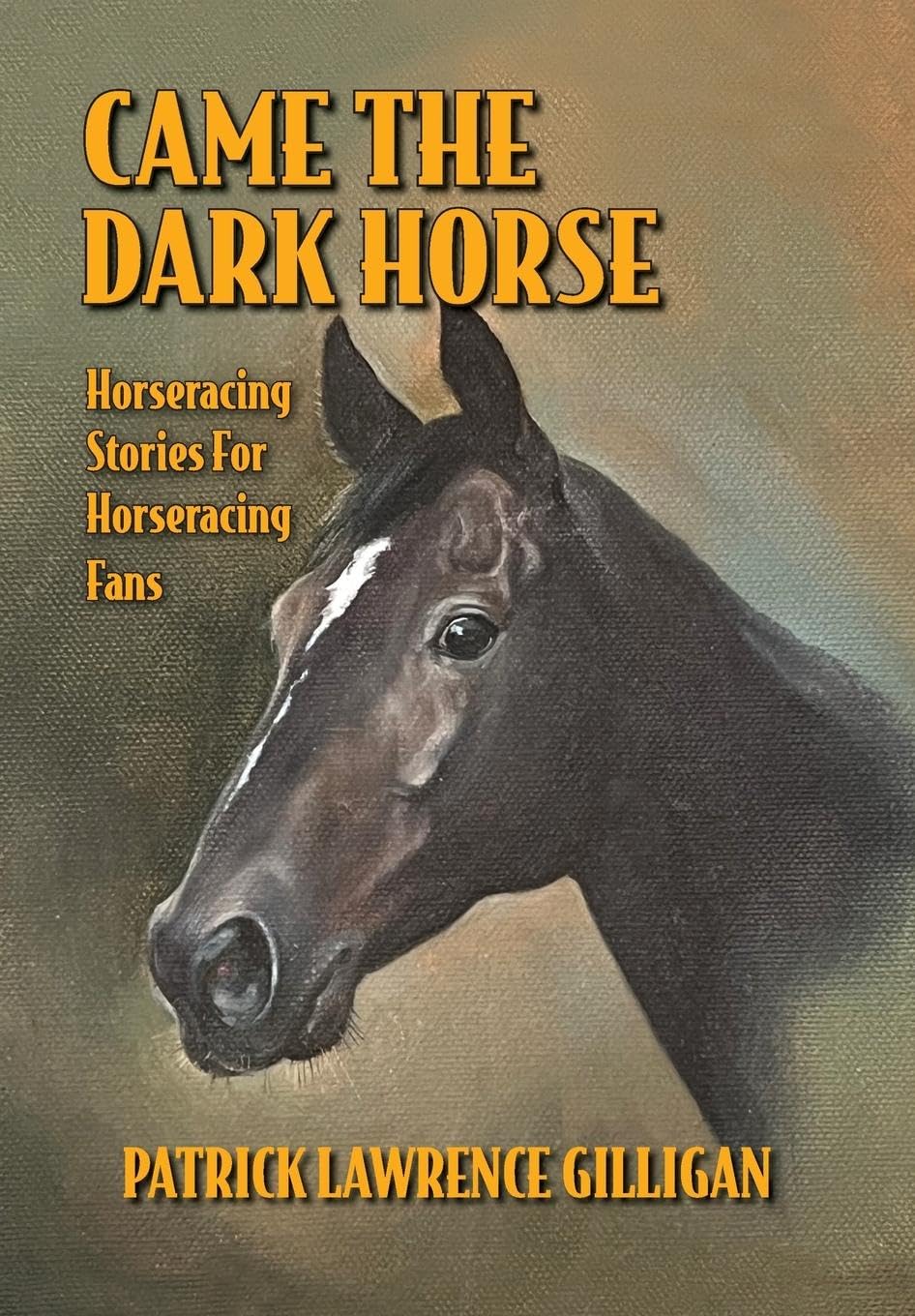 Came The Dark Horse – Horseracing Stories for Horseracing Fans (232pp, hardback) by Patrick Lawrence Gilligan is published by Random Horse Publications. Hardback edition (232pp) can be purchased for $21.99 at Amazon and other retailers
Came The Dark Horse – Horseracing Stories for Horseracing Fans (232pp, hardback) by Patrick Lawrence Gilligan is published by Random Horse Publications. Hardback edition (232pp) can be purchased for $21.99 at Amazon and other retailers
Black Gold: A touching way to remember a brave little horse who came to a heartbreaking end
Superman, The Rat, Jack the Ripper and friends - it’s all part of a day Louisiana Downs
Steve Cauthen: Reminiscences of the Kentucky Kid
View the latest TRC Global Rankings for horses / jockeys / trainers / sires


